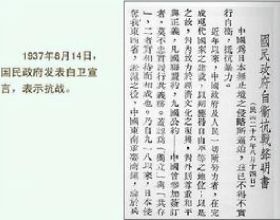(理解和翻譯不當之處,懇請各位領導、老師、前輩、同行批評指正)
點選文末閱讀原文可獲得原文連結
https://link.springer.com/content/pdf/10.1007/s40820-022-00842-4.pdf
無鉛錫鈣鈦礦太陽能電池(PSC)近年來發展迅速,被認為是一種很有前景的環保光伏技術。然而,仍然缺乏透過錫鈣鈦礦晶體內的內建電場抑制電荷複合的策略。在本研究中,使用路易斯鹼輔助重結晶方法制備了具有垂直 Sn2+ 梯度的甲脒錫碘 (FASnI3) 鈣鈦礦吸收層,以增強內建電場並最大限度地減少錫鈣鈦礦內部的體重組損失。與深度相關的 X 射線光電子能譜顯示,在這種異質 FASnI3 薄膜中,隨著 Sn2+ 含量從底部到頂部的增加,費米能級上移,這會產生額外的電場來防止光生電子和空穴的俘獲。因此,Sn2+-梯度 FASnI3 吸收層在開路電壓增加 130 mV 的情況下,對反式錫 PSC 表現出 13.82% 的效率,並且最佳化後的電池在 1 次陽光照射下連續工作 1,000 小時後仍保持超過 13% 的效率。
【摘要截圖】
【精選一圖】
Schematic of the fabrication of gradient FASnI3 film with an increased Sn2+ content from bottom to top by recrystallization of the as-prepared FASnI3 perovskite film assisted with surface-coated PMMA with a high concentration of carboxylate groups
a FTIR spectroscopy of the pure PMMA and PMMA-SnI2 mixture. Tof–SIMS depth profiles of the Sn, I, and Si elements in b FASnI3 control and c FASnI3 gradient films coated on the silicon substrate. d Tof–SIMS two-dimensional mapping profiles of Sn along the x–z plane for the FASnI3 control and FASnI3 gradient films. Cross-sectional SEM images and EDS point profiles derived from the e top and f bottom of gradient film
The valence-band XPS spectra of the a FASnI3 control and b FASnI3 gradient films with different Ar+ etching time. c Depth profiles of the EF in FASnI3 control and FASnI3 gradient films derived from the valence-band XPS analysis. Predicted energy-level diagram and charge trapping model in the d FASnI3 control and e FASnI3 gradient films in contact with the electron-selective and hole-selective layers
Surface potential mapping images of the a control, b Sn-poor, and c Sn-rich FASnI3 perovskite films deposited on the PEDOT:PSS/ITO substrate. TRPL spectra of the d control and e gradient FASnI3 films coated on the quartz substrate before and after contact with C60 or PEDOT:PSS layers. f Output dark current plots as a function of the applied voltage for the ITO/FASnI3 control/Au and the ITO/FASnI3 gradient/Au devices
a Schematic illustration of the gradient FASnI3-based inverted PSCs and b the corresponding device cross-sectional SEM image. c Forward and reverse J–V curves of the best-performing FASnI3 control and gradient PSCs. d IPCE spectra and the integrated current density of the FASnI3 control and gradient devices. e Forward and reverse J–V curves of the HTL-free FASnI3 gradient device (the inset shows the cross-section of the SEM image). f Operational stability test of the encapsulated FASnI3 gradient PSC under simulated AM 1.5G light in air
【精選一表】



















